Publicani
The
Publicani are most well known as the tax collectors of Draconian society. The layout of the individual organizations are confusing, therefore most do not know what they truly are.
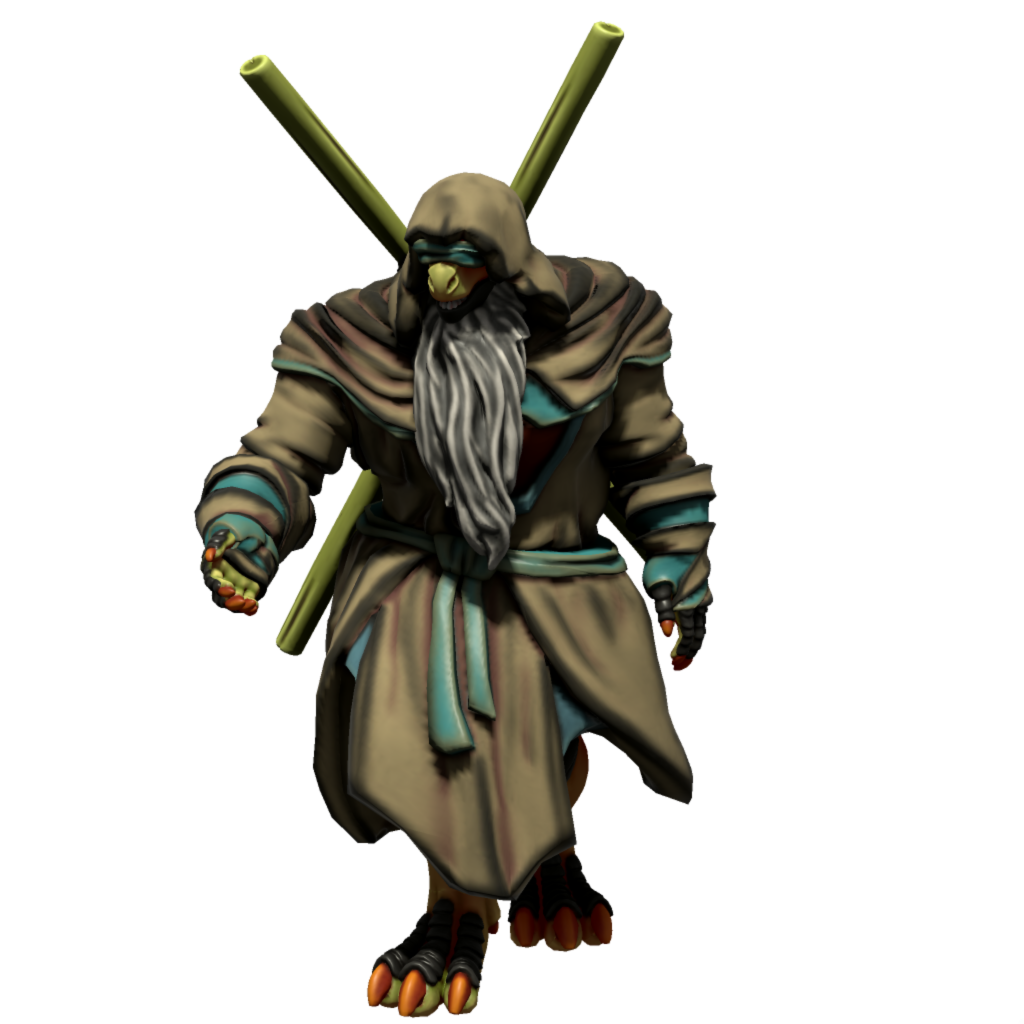
The Mighty Herald by Jarhed
Due to this, many do not understand their affiliation to the governments of the villages. In truth, they are technically their own bodies independent of any government oversight, though they are still in the umbrella of the state.
These are, however, companies, and therefore there is a different, unaffiliated Publicani for each village.
Their duties are to collect taxes and aid in construction of public buildings around the Draconian villages.
Religious Organizations
There is not a large amount of separation of Church and State in Draconian Territory, and Chiefs are often blunt about the influence religion has on their policies and time as a leader.
Even Grand Wizards do not hide their roots in whatever religion they happen to follow. After all, there is little that can be done to legislate it, as they are the ones that make the laws.
Most notably of these religious Grand Wizards are those like the Mighty Herald, a cult leader who gained the position both because of his power but also because of the far reaching tendrils of his religious organization, the Paragons of Unity.
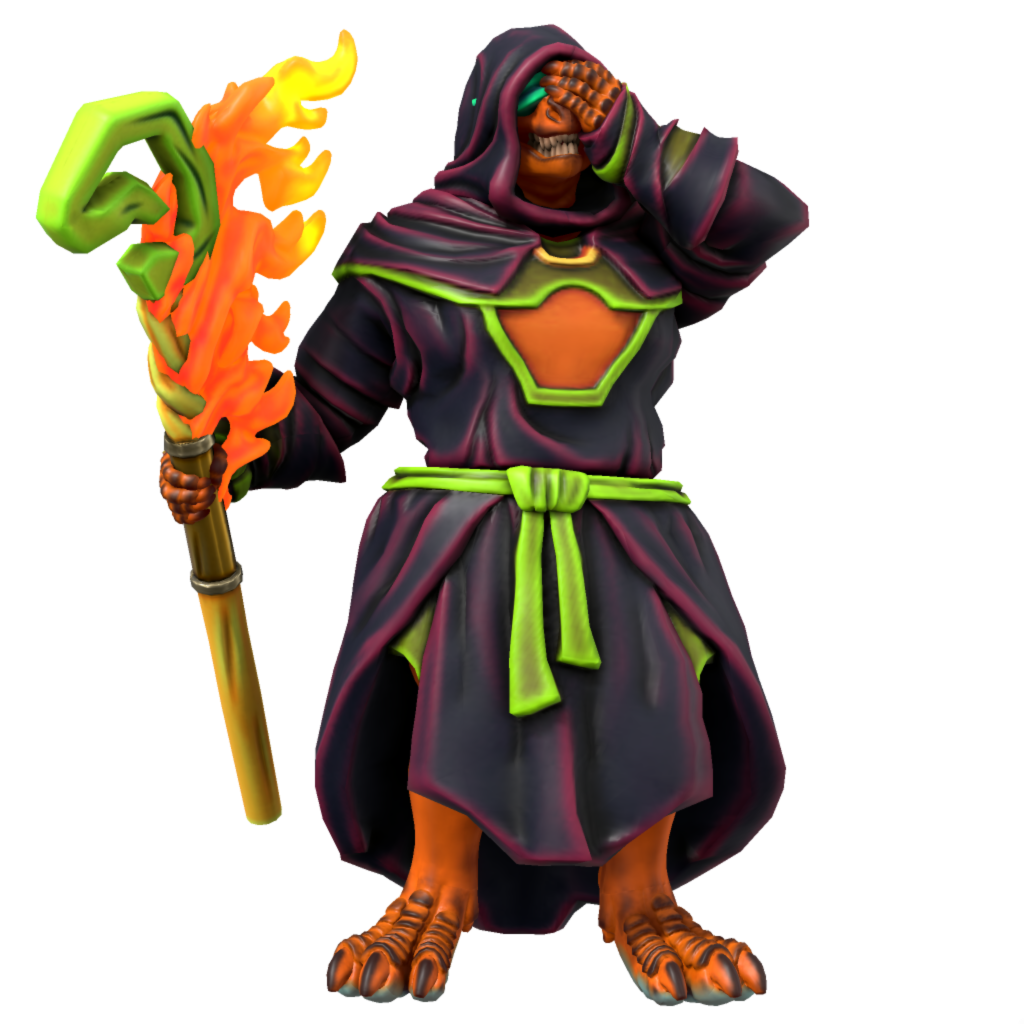
Vornush Wrakris by Jarhed
There was also Salasar Feaphed, the demigod child of
Phrixus who fought against corrupting forces of
Helle on his people.
The forces of
Phrixus generally had little influence due to the distance from their Temple to the villages.
It was a trek that took at least a week for the fastest Draconians to get from one to the other, so they rarely visited and rarely had their hands in politics.
The forces of
Helle, however, often intervened. They would influence Chiefs, Grand Wizards, Noble Councilors, anyone they could, to act on the teachings of Helle and embrace greed.
Vornush Wrakris, Head Priest of Helle at a point in time, even took over the city of Zephys via Helle's power, becoming the defacto ruler of the Draconian people until his defeat at the hands of
Nalrik Tilrak.
Southern Elone Treaty Organization
The
Southern Elone Treaty Organization, or SETO was an protective alliance of Chiefs and Villages made in direct response to the Chief Crisis, the power Chiefs had, and the desire to unify the power of the Draconian people.
Started by a trio of Chiefs, Nalrik Tilrak of
Bortan,
Vardid Vracrath of
Ealla, and
Higar Vixik of
Tamd, the intention was to work together for peace and prosperity of the Draconian Villages.
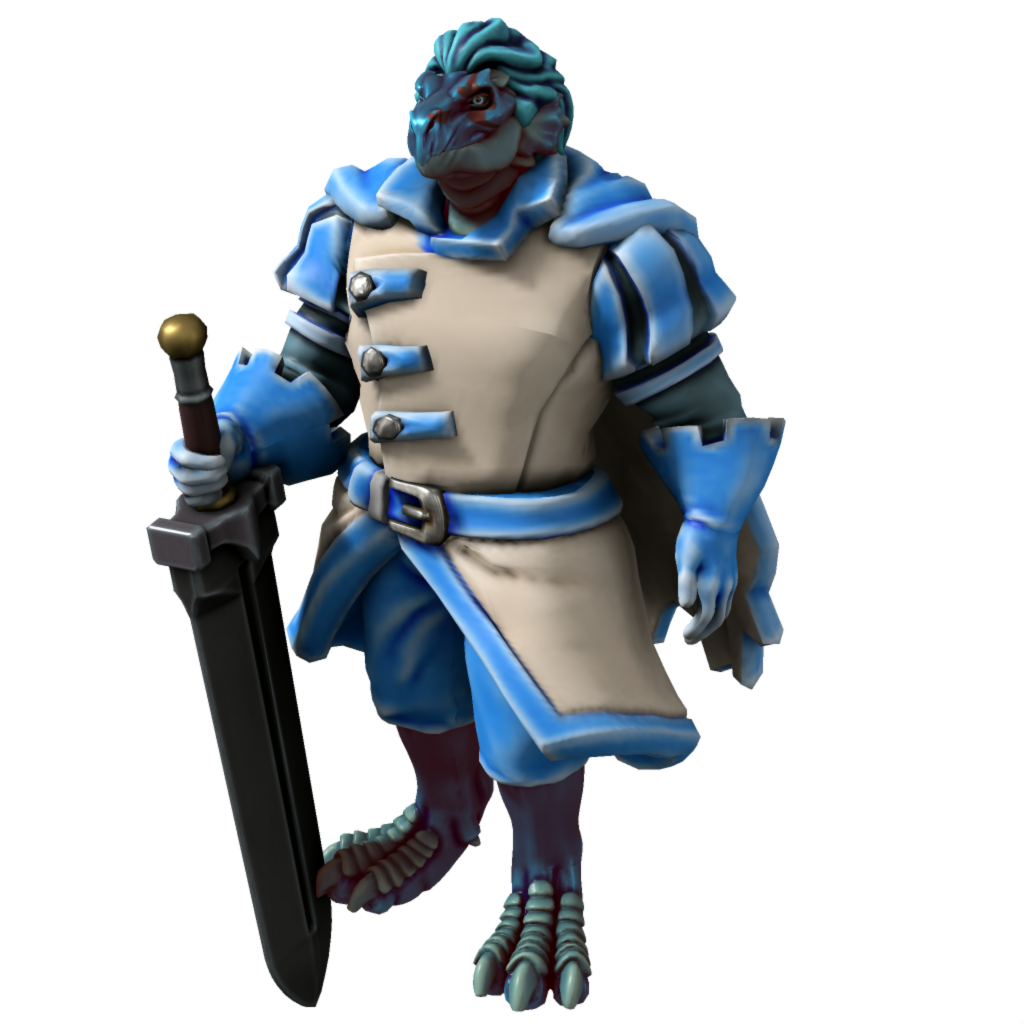
Nalrik Tilrak by Jarhed
There were many who opposed this, not the least of which being Chief of Evity
Coldrid Saxan.
However, ultimately, the Villages were all united together and peace was brought about for a short period of time.
Over the years after its founding, more and more villages broke off. First, Tamd. Soon, Dembar followed them. Yirthum was next. Evity snuck out via loophole, and finally Bortan was voted out.
Ultimately, all that remained of the once great alliance was Ealla, Ilder, and Waire, a shadow of its former self, yet still attempting to bring peace like Nalrik Tilrak and his allies wanted.
Settlements
There have been, in total, 12 or 13 Draconian settlements (depending on ones view of a certain split village).
These villages are as follows:
Bortan
The Militaristic Village, also the first village, Bortan was built in the Valley of Creation, where the first Draconians were hatched, all made by the Goddess Helle.
These first Draconians were:
- Daxur the Red
- Tilrak the Blue
- Nurdesh the Green
- Wrakris the Orange
- Nimphonker the White
- Saxan the Black
- Durzire the Yellow
- Yelrath the Brown
- Dione the Purple
Wrakris the Orange led them to construct a village that they could reside in, becoming the first Village Chief and first leading figure in Draconian society, though Daxur the Red was the first Draconian to hatch and is considered the progenitor of their people.
Bortan eventually gained its identity during the War of Creation, when
Kath the Eternal, the Golden
Dragon Lord preached the word of Phrixus and convinced a large subset of Bortanni led by Chief Lalraan Tilrak that they should convert.
From this, Bortan became associated with two things: Phrixus and War.
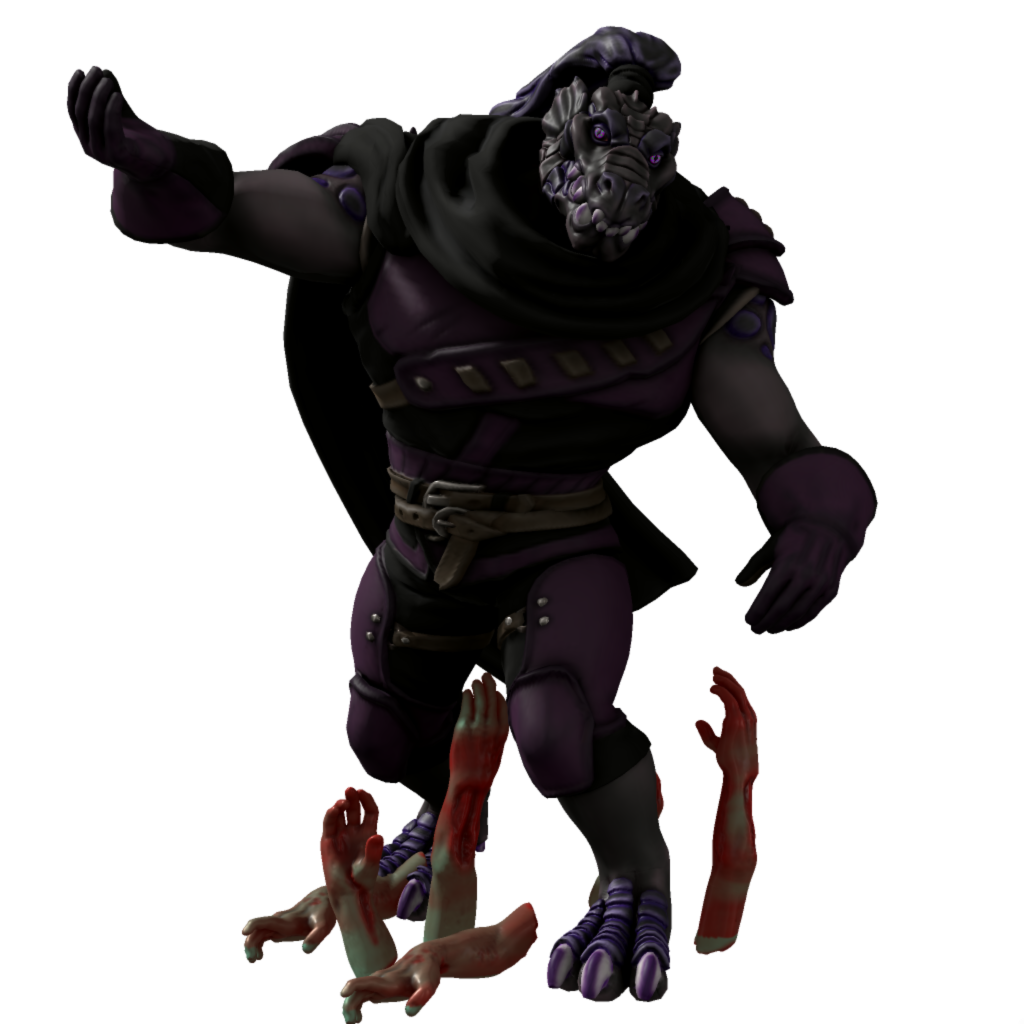
Voleth Saxan by Jarhed
Ever since then, they have been the center of Phrixus worshipers as well as one of the strongest militaries in the world, with their very existence dedicated to war, as well as standing in opposition to the status quo set by the Grand Wizard.
Evity
The Forbidden Village, Evity was the second Draconian settlement, formed after the Helle followers lost the War of Creation. In particular, it was its first Chief, Voleth Saxan that suggested they build their own settlement.
For a time, it was dedicated just to magic, as Helle introduced them to its wonders, but eventually one of its very own would give it new meaning.
Kilprax Ildial, the first Grand Wizard, introduced them to the
Forbidden Arts, and Evity quickly embraced these as its identity.
These arts have included many things over the years, but generally they are focused around
Necromancy,
Puppetry, Divination, and other arts considered too far for standard mages with morals.
Evity also gains some identity from its rivalry with Bortan. There has almost never been a span of fifty years where there has not been one or two wars between the two Villages, or at the very least a large skirmish.
It has always been the largest village and largest Draconian settlement aside from the capital city of Zephys itself, both in size and population.

Shirthecmonis Eravarax by Jarhed
Ealla
The Bardic Village, Ealla was settled by Shirthecmonis Eravarax and a group of Bards that split away from Evity.
Shirthecmonis sought a place where they could more freely study
Bardic Practice with laws suited to their needs and requirements and with a place that does not complain so much about the noise.
Of course, there were more deep seated issues that caused the break, but that is what future generations of Eallans teach in hopes that they may have stronger relations with Evity. This does not always work, as some Evitians do not like the Eallan spirit and attack anyway.
Ealla prides itself on being a generally peaceful and prosperous settlement, accepting outsiders of all kinds and putting on concerts and festivals open to the entire world.
Alongside this, they keep close ties with many villages, not trying to provoke any or make enemies. They like to stay as a hub for people from all walks of life to travel to.
All but Tamd, their natural and fated foe.
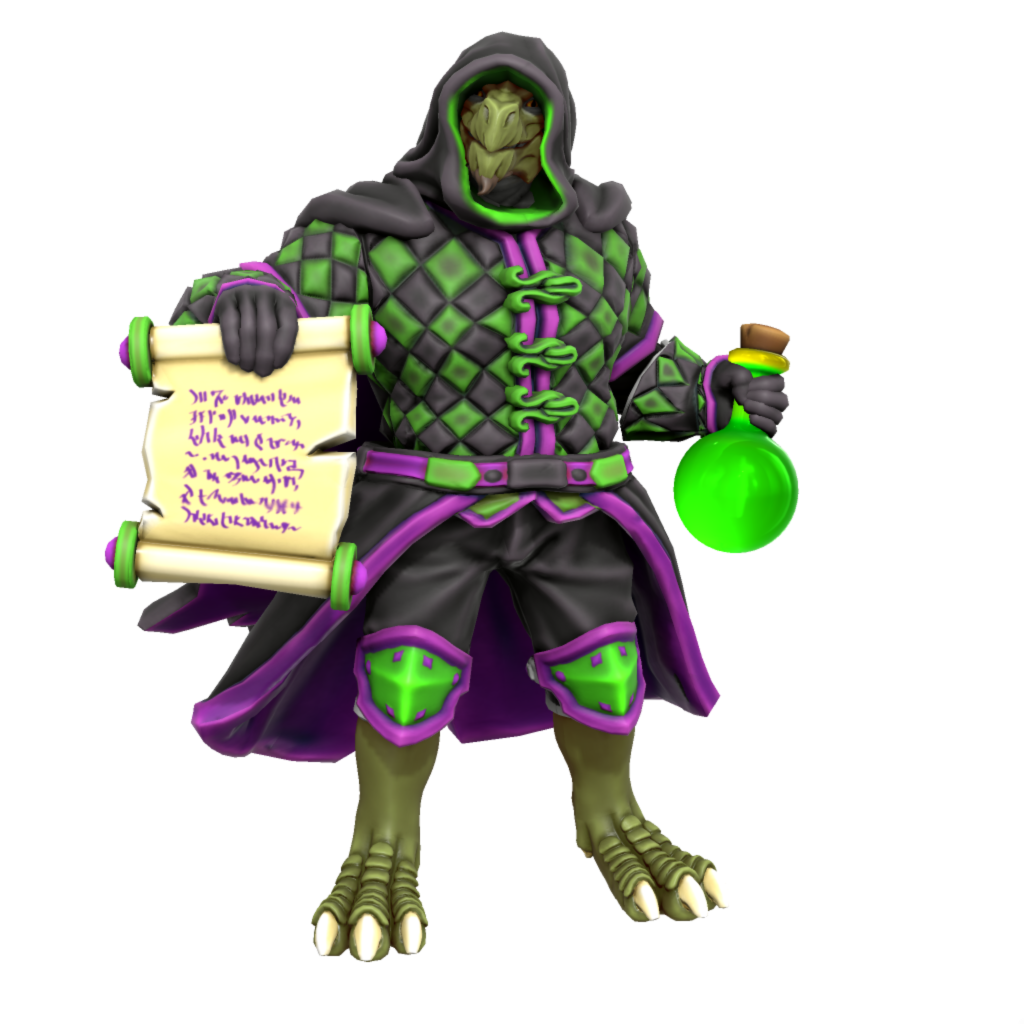
Colmiceth Nurdesh by andreaspsillos4
Tamd
The Alchemist Village, Tamd is a contrast to Ealla in nearly every way. While Ealla is open to the world, Tamd is isolated, residing on a peninsula coated in poison that only Tamdians can access.
It was founded, like Ealla, by alchemists that abandoned Evity in hopes of finding a new home. Led by Colmiceth Nurdesh, they settled on a peninsula to the South, where Ealla tried to greet them. The alchemists attacked the bards, sparking a war and a constant, unending rivalry between the two that defines both villages.
Draconians from Tamd are raised with considerably more education than other villages, as study is the center of Tamdian life. So, too, do they grow up unaware and spiteful towards the outside world.
A key tenet of Tamdian teachings is hatred, whether it be towards outsiders, fellow Tamdians, Eallans, or oneself. Hatred is a core part of Tamd, alongside spite and, of course, alchemy.
Most Tamdians are alchemists, and those that aren't often either do not learn a magical practice or abandon the village entirely.
Tamdians are not very accepting, seeking progress and knowledge over anything else. Still, the results do not show this harming the reputation of Tamd, as it produces some of the brightest and most powerful Draconians, though it does often hurt the citizens of Tamd themselves, as well as all other villages, as Tamdians are said to carry a curse that often dooms them to a tragic fate.
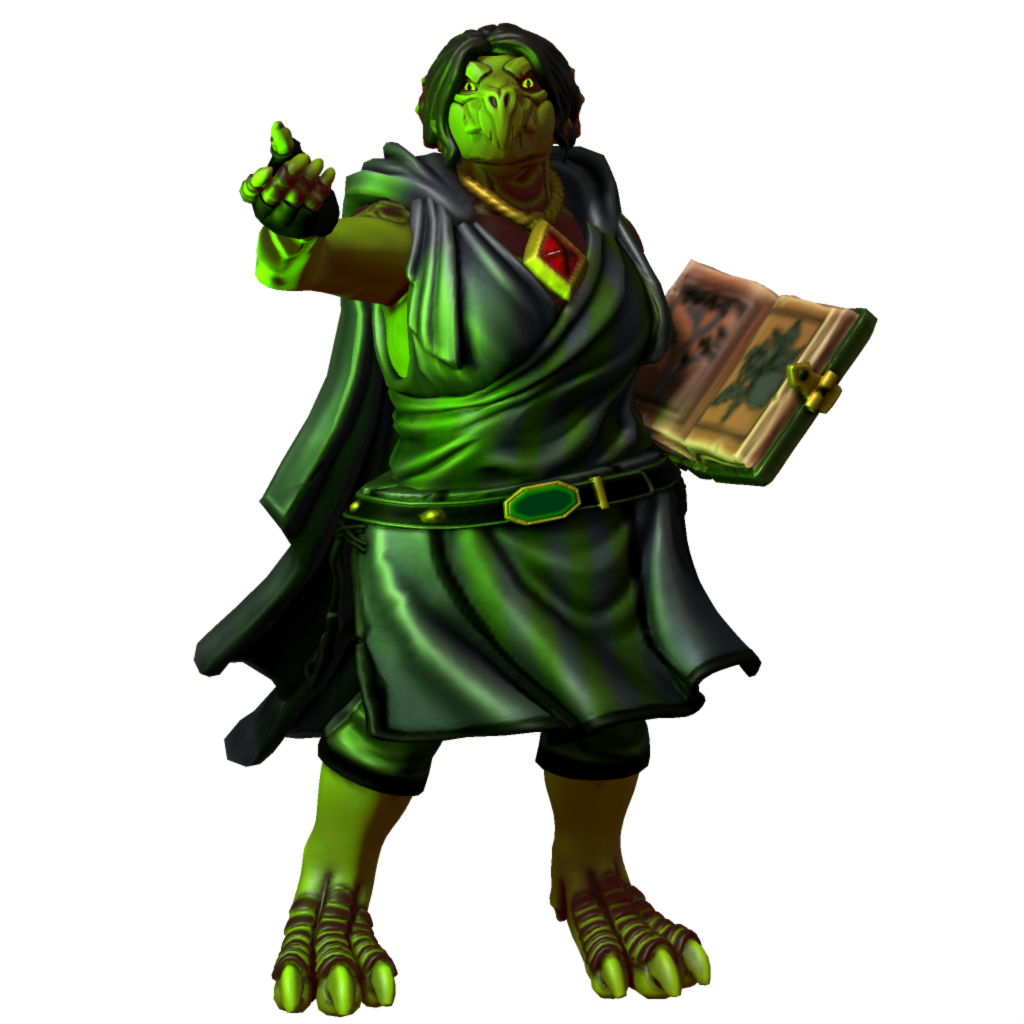
Mamrin Suzita by Jarhed
Erdenn
The Organic Village was the third offshoot of Evity, made on the outskirts of the
Elven Forest by Mamrin Suzita and various nature-lovers, particularly
Druids and
Beastmasters.
The residents of Erdenn were generally those that liked to keep to themselves, contenting themselves with nature and all it contained. Therefore, they did not interfere with the other villages much, though they viewed the practices of Evity and Tamd as unnatural and looked down upon them.
However, it was not perfect.
The Druids and Beastmasters had regular trouble not with those outside, but instead internally. Particularly with each other.
Factions of Druids in Erdenn often decried the way that Beastmasters would force animals to submit to the will of the Beastmaster, calling it unnatural and disgraceful.
Factions of Beastmasters, then, said that Druids did not truly have any respect for nature, as they forced the plantlife to bend to their will.
This created two factions, the Erra Druids and Denn Beastmasters, who would seek to kick the others from the Village, running with slogans like:
"Those that respect nature would leave it be!"— Denn Independence Chant
Eventually, they got what they wanted, with Erdenn splitting in half into two new villages: Erra and Denn.

Lorzavur Exikmaan by Jarhed
Erra
The original Druidic Village, Erra was closer to the Elven Forest and therefore became overgrown with plantlife.
The Elves hated this, and while its people tried to simply integrate with nature, they were never able to.
They were destroyed after a short existence in a war against Denn, where outside forces worked together to destroy both villages. Its longest living known survivor was Lorzavur Exikmaan.
Denn
The Bestial Village and the other half of Erdenn, its main residents were Beastmasters. The people of Denn were generally more controlling and believed they had a grand place in the world, as shown by how willing animals were to listen to them.
While Erra was looked upon with little favor because of their passive nature and connection with the plants, which were seen as lesser, Denn was looked down upon because most people considered the attitude that created its village to be pompous and self important, even if its people may have been kind and generous.
Like Erra, it was destroyed in a war between itself and its former other half. Unlike Erra, there are no clear survivors of the village that lived long after its destruction.

Impak Daxur by Jarhed
Zeldarr
The Border Village, Zeldarr was not a village under Draconian control for a particularly long stretch of time, yet it still holds a central place geopolitically and culturally for the Draconian people, particularly followers of Phrixus and citizens of Bortan.
After winning a war against the Dwarves and unlocking magic for Bortanni citizens, Impak Daxur settled a village on the land they claimed from the Dwarves, on the border between the Draconian lands and Dwarven territory.
It would be contested its entire existence, by Dwarves and Elves alike. The Dwarves would take it over and control it for most of history, calling it Ebreichzell instead of Zeldarr.
The Elves often tried to take it solely for the reason that they did not want the Dwarves to have it, and eventually this extended to not wanting the Draconians to have it either.
While Draconians have not owned Zeldarr for a long time, it remains a talking point for Draconian nationalists who seek to "reclaim lost ancestral lands."
For the short period of time the Draconians did live in Zeldarr, it followed much of the practices of Bortan and used only combative magic, though various schools of magical techniques have claimed that in a reclaimed Zeldarr, they would set up shop there. The largest movement has been illusion mages seeking to turn Zeldarr into a hub for illusion magic.

Perzita Theldrar by Jarhed
It is for this reason, as well as Zeldarr largely only existing in long faded memory, that it is also called the Illusory Village.
Zephys
The Floating City, also the Capital City of the Draconians and the seat of power for the Grand Wizard, Zephys is the largest Draconian settlement and is generally considered to be the largest city in the world.
It consists of three layers:
- Lower Zephys- A residential and commercial zone that spans the actual ground layer of Zephys.
- Upper Zephys- A layer that floats above Lower Zephys, inhabited mostly by the mansions and lands belonging to Draconian nobility, as well as establishments that consider themselves too high class for Lower Zephys.
- Magic College- A castle that floats above even Upper Zephys, this is where four classes of sixteen students study each year to become better mages and make a place for themselves in the world. It is also the seat of power for the Grand Wizard.
These three layers make up what is an incredibly defensible city. Lower Zephys is walled and enchanted to be impenetrable, and even if it is taken, few armies can make it to Upper Zephys, and when they do, they are met with hordes of powerful mages. However, this creates a sense of hubris in the Draconians of Zephys, thinking they are safe from all threats. The fact that there have been few successful invasions does not mean there have been none, and Zephyrian Draconians are still put in many dangers by threats seeking out Magic College students.

Accith Durzire by Jarhed
Zephys was founded in part by three different figures. These were:
- The Golden Dragon Lord Kath the Eternal, who built the initial foundations, most notably the Magic College, long before any other living creature could behold it.
- The First Grand Wizard, Kilprax Ildial, who created Upper Zephys as a test of his magic and a sign to invite others to come to settle the city.
- The first noble, Accith Durzire, who led the Great Draconian Migration and was the leading figure that drafted the plans for Lower Zephys's construction.
Yirthum
The Enchanting Village, also known as the Weak Village by some, it was also built by Accith Durzire, with aid and suggestion from Kilprax Ildial.
While it is generally only the idea of Zeldarr that inspires Draconian unity and nationalism, Yirthum was founded as a direct monument to the Draconian people with the express idea of uniting the fragmented villages.
It did not split off from any village, but instead was founded as a joint project by citizens from all villages working together, showing they could do so.
They focused largely on the magical technique of enchanting, and became rather incredible with it, alongside other things like becoming the center of Draconian wine and the most bustling port in the south of Elone.

Crimras Thampoc by Jarhed
In the
Draco-Elvish War, they were targeted by Captain Commander Wallis Nalo and Captain Arandon Vonar. Despite the efforts of Laarthan Durzire, Accith's daughter, the village was taken by the Elves after they were sold out by the Yirthumite traitor Crimras Thampoc.
Therefore, it split the Draconians once again, losing them the war. The Elves took it over as a puppet state so that it would never inspire the Draconians to unite again. The Thampocs took the spoils, becoming the proxy of the Elves in the village, traitors to their people. However, nothing could be done about it.
It became known as the Weak Village because of the actions of Laarthan's successor, the Elven appointed chief Satrin Myathuluc. Satrin was an incredibly weak mage, and was turned over to the Elven side by second Grand Wizard, the traitor Tobor Tuldad.
The Elves made Satrin chief because they knew the Chief would be an example to the people, and therefore they could keep the people of Yirthum weak and compliant. With a weak mage in charge, Yirthum unintentionally followed his example, and since then many have considered Yirthum to largely produce some of the weakest Draconian mages.
For this, both Satrin Myathuluc and Crimras Thampoc are considered some of the most evil figures in Draconian history, and both were killed by mobs of Yirthum freedom fighters, though the movement was not successful.
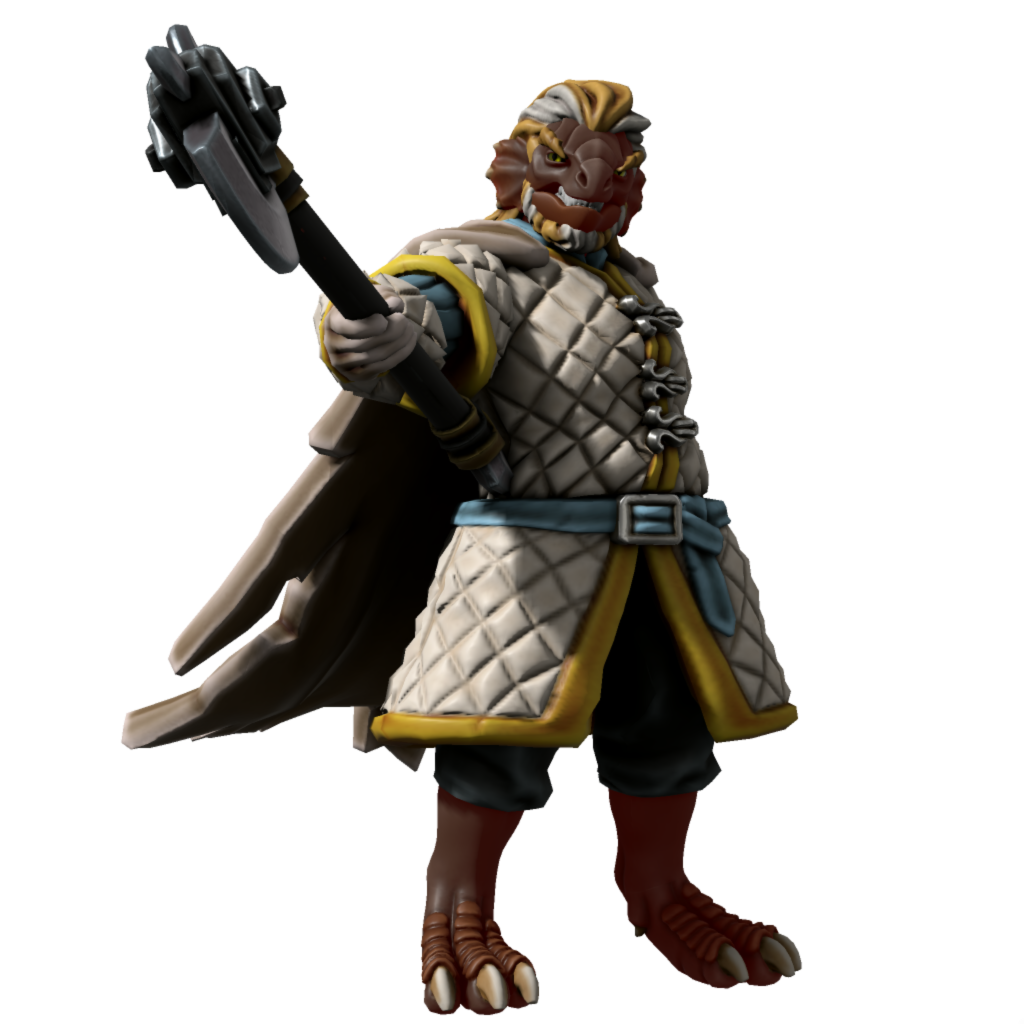
Satrin Myathuluc by Jarhed
However, that first movement was not the only one. Despite the best efforts of the Elves, many Draconians still unite behind the idea of a free Yirthum.
The movement never truly dies, though sometimes it fades only to be picked up again. Some of the greatest proponents throughout history have been figures like
Kicad Bavul, Jargar Eltan, Jinzire Eltan, Draqiroth Lealred, and Rhoziros Nimphonker.
They seek to liberate Yirthum from their subjugation and use it to then unite all Draconian people once more, like Kilprax Ildial was able to do.
Yirthumite subjugation did grant them one thing: wealth. Yirthumites were given large heaps of Elven gold and their village was completely made over with Elven lavishness in the style of the gilded city of
Camor in hopes that they would be sated.
Many are, particularly the uber wealthy, but the poorer citizens of Yirthum and those with truly any sense of morality often take issue with those that want Yirthum to stay in Elven hands.
Due to their Elven ties, they have a small rivalry with
Waire, a village founded in opposition to Elven demands by Draconians,
Korvians, and Elven remnants. Compared to other village rivalries like Tamd and Ealla, Bortan and Evity, and Ilder and Dembar however, it is rather small and doesn't often amount to more than friendly rivalry between citizens of the two. That is not to say, however, that it has never meant war between the two, for there certainly has been, but it has placed Waire in danger as they are surrounded by Elves.
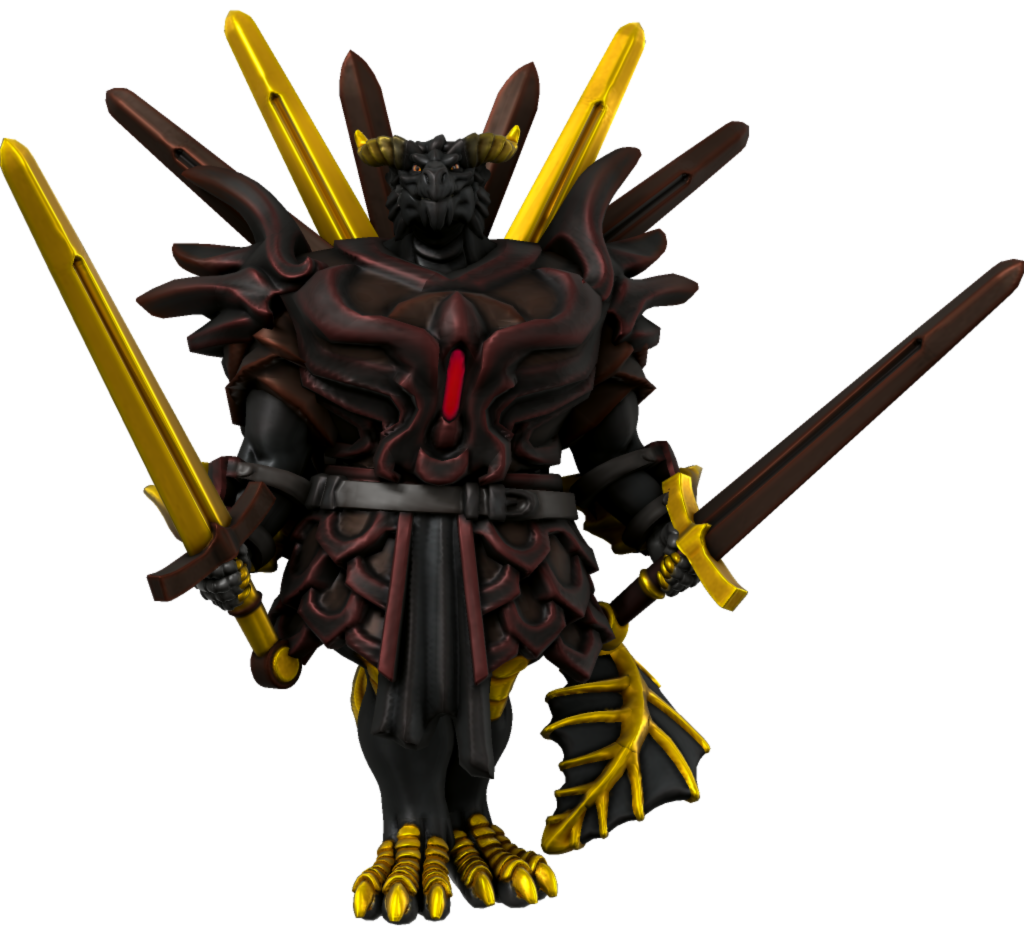
Oraakil Mardaar by fyrcracker
Ilder
The Druidic Village, Ilder was initially founded as Ild Erdenn, meaning Old Erdenn. Otikul Nurdesh, its first Chief, intended to rebuild the ancient village of Erdenn from the ruins that it had left behind.
Founded again by disgruntled Druids and Beastmasters who were unhappy with Evity, as well as other villages that they had found themselves in, it was meant to be an example to all other villages like Yirthum was.
The Elves, however, acted far swifter and more decisively than before. While it is unclear the role Captain Commander Narkard or King
Aratorin Nerifir had in the attack, Captain Marnis Goriish and Aeydark Lesuant led a hunt that became known as the
Ilder Massacre in the year 526, wiping out the village and leaving few remnants, save for those survivors like the young
Oraakil Mardaar and the elder Chief Otikul Nurdesh.
Otikul moved on, calling Ilder a failed project and making a new village, but Oraakil would grow up to eventually refound it in 548 alongside others, including former Erra resident Lorzavur Exikmaan.
Under Oraakil, Ilder prospered as the center of Draconian Territory, due to its location and decisions made under his leadership. He denied the addition of the
Publicani to his village, established trade relationships with all of the villages, and created farms with druidry that could feed the entire Draconian population.
Ilder would change in many ways yet in many ways it would stay the same. The Mighty Herald, a later Chief of Ilder, would go on to be much less peaceful to his neighbors, igniting a rivalry between Ilder and Dembar which had previously been just disagreements and disdain between Chiefs Oraakil Mardaar of Ilder and Otikul Nurdesh of Dembar.
More than that, the residents of Ilder hated the Elves and would take any opportunity to strike against them.
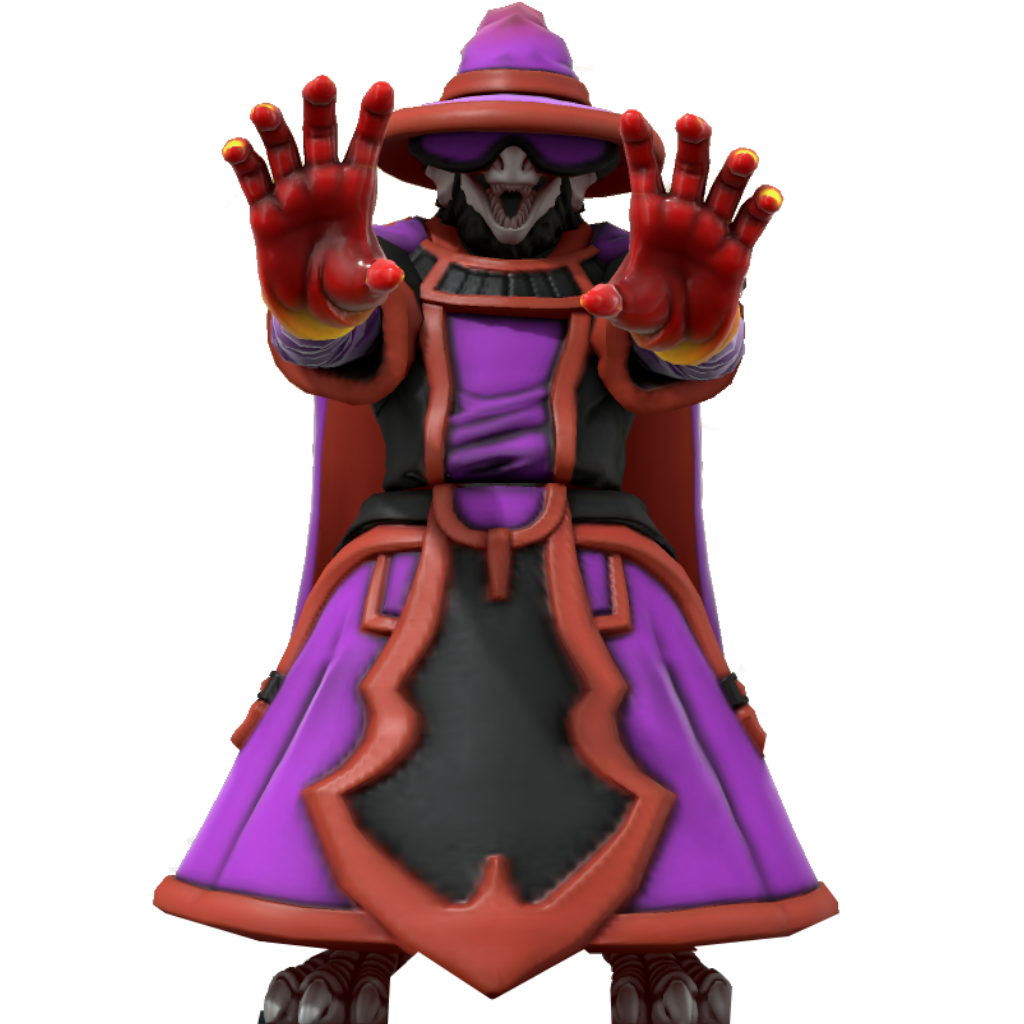
Tobor Tuldad by Jarhed
Dembar
The Natural Village, Dembar was initially founded to fix the mistakes of Ilder. Otikul Nurdesh, its founder and first Chief, stressed that it was different from Ilder.
"I have learned from my mistakes in ways that few are given the opportunity to do. I will not allow my name to be associated with tragedy or failure like Tobor Tuldad, nor will I let the good Druids and Beastmasters of Draconian Territory return to homes they were not welcomed in like Mamrin Suzita had."— Otikul Nurdesh
Still, it is hard to deny that it very much resembles Ilder. The only difference upon its founding was that Ilder was founded near the Elven Forest to accomodate for Druids, while Dembar was founded farther to the east, in a land populated by wild beasts.
Due to this, when Oraakil Mardaar refounded Ilder, most Druids abandoned Dembar for it. Therefore, in the years following Ilder's refounding, Dembar started forming its own unique identity and culture focused on animals and beastmastery, no longer needing to accomodate Druids.

Yernok Caerxan by Jarhed
Waire
The Impossible Village, Waire was founded by the blind Draconian Yernok Caerxan after he unlocked Impossible Magic. He intended for it to serve as a place where people could study it, push past their limits, and unlock Impossible Magic so that then they could help others. After all, he noted that fire magic was the most common affinity, and wanted to change that:
"The world is already on fire, it needs someone who can put it out."— Yernok Caerxan
It had few success stories, with only Yernok Caerxan, Uustac Acoria, and Dresser Caerxan being recorded cases in the first thirty years of its existence.
It was destroyed by the Great Vampire Lord
Dresmorlin Cobath after Yernok's death, then passed on as a joke to the Korvian named Sinner.
Sinner went on to rebuild it, taking Yernok's last name as his own and creating a new purpose for Waire: to hunt and exterminate all
Vampires and any other undead threats.
This created the Vampire Hunters, or as they would grow to be known, the Witch Hunters that eventually hunted any that used their magic to hurt and exploit innocents.

Wiscys Nicandir by Jarhed
It was initially an Elven village where the Plague of Elnahil was made in the Draco-Elvish War, the disease that killed Kilprax Ildial and cemented Elven control. Yernok Caerxan founded it to spite the Elves, and when it was refounded by Sinner Caerxan during the Elven Civil War, it was a haven for Elven refugees, meaning its population is, much like Yirthum's, half Draconian and half Elvish.
They are a relatively isolated land, much like Tamd, as Waire resides deep within the Elven Forest. Many consider it equivalent in its location to both Tamd and Zeldarr, as it is isolated but also on the border of territory that is often opposed to their existence.
They are able to operate in isolation, much like Tamd, due to the policies set in place by fourth Grand Wizard Wiscys Nicandir, who allowed for more village autonomy. As it is hard to reach Waire to get messages out, they are granted more freedom than others.
Some believe this is why they have been able to remain such a diverse population, as many older and wealthier Draconians wish to keep their villages controlled by Draconians, but many Chiefs of Waire have been Korvians or Elves. A practice that Sinner Caerxan fought to keep, but many Draconians think is unfair.
Culture
It is difficult to find a distinct, truly uniting Draconian culture, as all Draconian villages have their own practices, ideals, politics, and culture. However, there are common throughlines, often found in places like Yirthum and Zephys where there are people from all over Draconian Territory.

Ardar Tilrak by Jarhed
Draconian Nicknames
Draconian nicknames are a way that the most prominent figures in Draconian society are immortalized.
Some of these names are self-proclaimed or declared to show ones accomplishments, often when one is labeled as the whatever magical technique they use, they are considered the pinnacle there will ever be of that and therefore the example, such as Lorzavur Exikmaan, Rhoziros Nimphonker, or Ardar Tilrak.
Other titles are declared by outsiders, sometimes as insults, sometimes to denote ones failures or evils in history, and sometimes to just make sure what they did is never forgotten.
For most of history, they were only given to Draconians, until the Human known as
Sirlini Glirdog became the first non-Draconian Chief, gaining a Draconian nickname and opening the door for other non-Draconians to perhaps one day gain a Draconian nickname.
- Impak Daxur- The Red Dragon
- Kilprax Ildial- The Grand Wizard
- Lorzavur Exikmaan- The Druid
- Tobor Tuldad- The Traitor
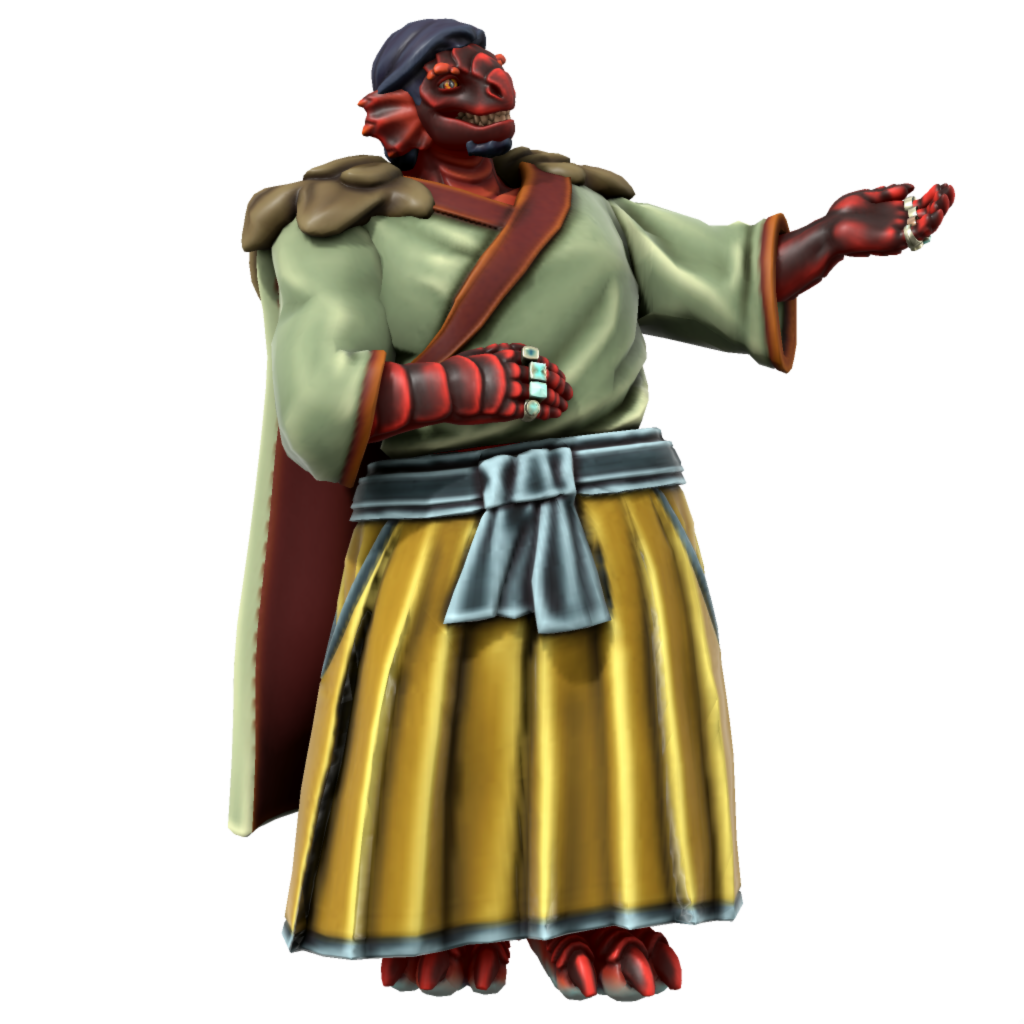
Urokris Erthar by Jarhed
- Iorkul Kricel- The Beastmaster
- Crimras Thampoc- The Elf
- Wiscys Nicandir- The Witch
- Nawunax Valdacmith- The Necromancer
- Brenvorth Taldis- The Coward
- Perzita Theldrar- The Strongest
- Medroth Umtic- The Scourge
- Fearvroth Clolith- The Pizza Man
- Vimbish Baxcol- The Joke
- Viaxis Vammush- The Plague
- Fulkac Sagar- The Unlucky
- Felonius Questus- The Sullen One
- Salasar Feaphed- The Scholar
- Sirlini Glirdog- The Comedian

Fepar Tilrak by Jarhed
- Fepar Tilrak- The Guardian of Peace
- Drorthod Lormorn- The Traditional
- Urokris Erthar- The Pacifist
- Higar Vixik- The Professor
- Vardid Liloryas- The Ice Queen
- Nalrik Tilrak- The Impossible
- Vornush Wrakris- The Conductor/The Greedy
- Sinner Caerxan- The Hunter
- Orlayas Ojeux- The Magician
- Hameila Neconkus- The Adventurer
- ???- The Mighty Herald
- ???- The Jackal
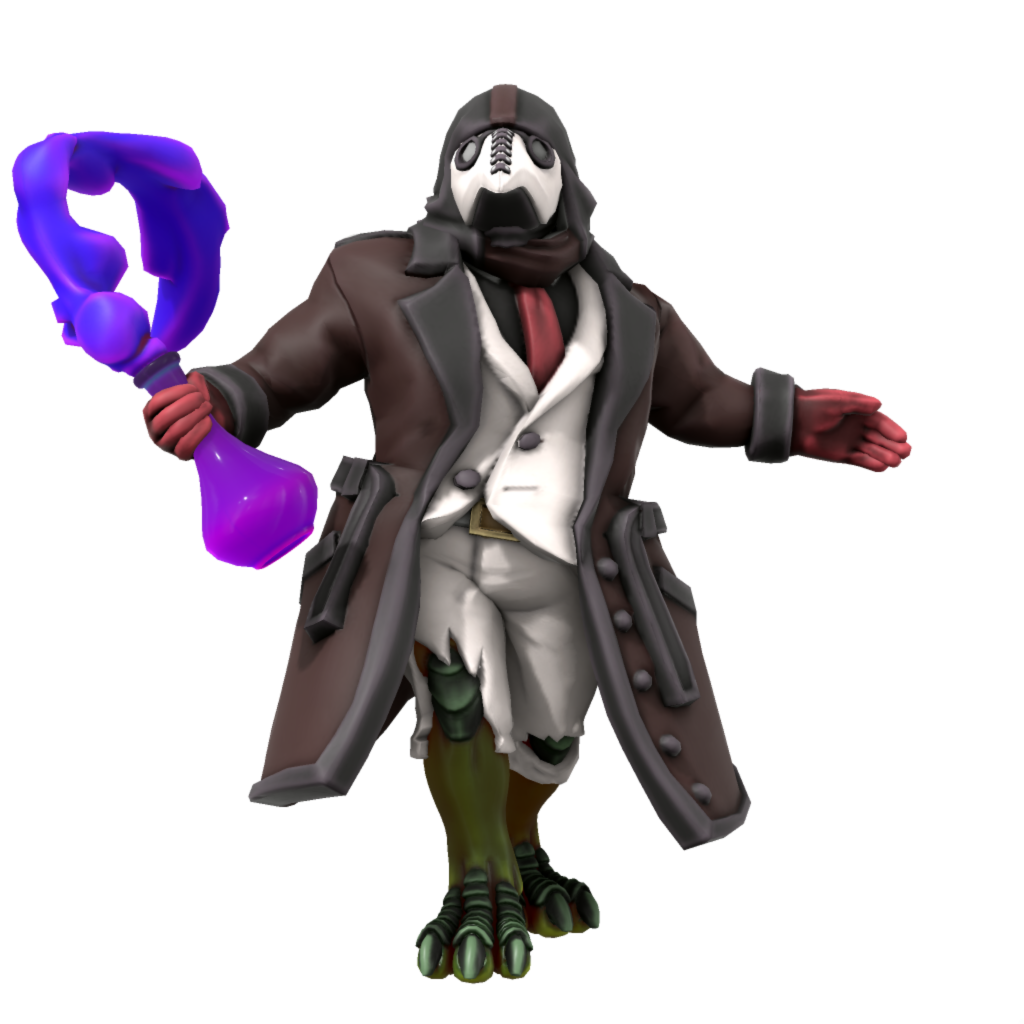
The Professor by Jarhed
- Draqiroth Lealred- The Conqueror
- Ardar Tilrak- The Bard
- Rhoziros Nimphonker- The Alchemist
- Naxiris Daxur- The Living Meteor
- Ohymm Daxur- The Dragon
- Caergrax- The Faceless
- Tograx Daxur- The Dim-Witted
These nicknames are often cemented in history books, with their being lists of names throughout history which are checked by scholars before any new ones are officially given. It is tradition not to give out a nickname that has already been given, but in some cases there have been those that have surpassed the previous holder.
In those cases, the previous holder either loses their title or one of the two gains an adjective on the title to distinguish them.
There are some cases where the true identity of the title holder is unknown, where the person only goes by their title and obscures their identity. This is the case most notably for the Tamdian alchemist known as the Professor, as well as the Cult Leader the Mighty Herald and his second in command, the Jackal. The public never truly learned their identities, and the nicknames are listed in records beside blank spaces, meant to one day be filled in if the truth is ever discovered.
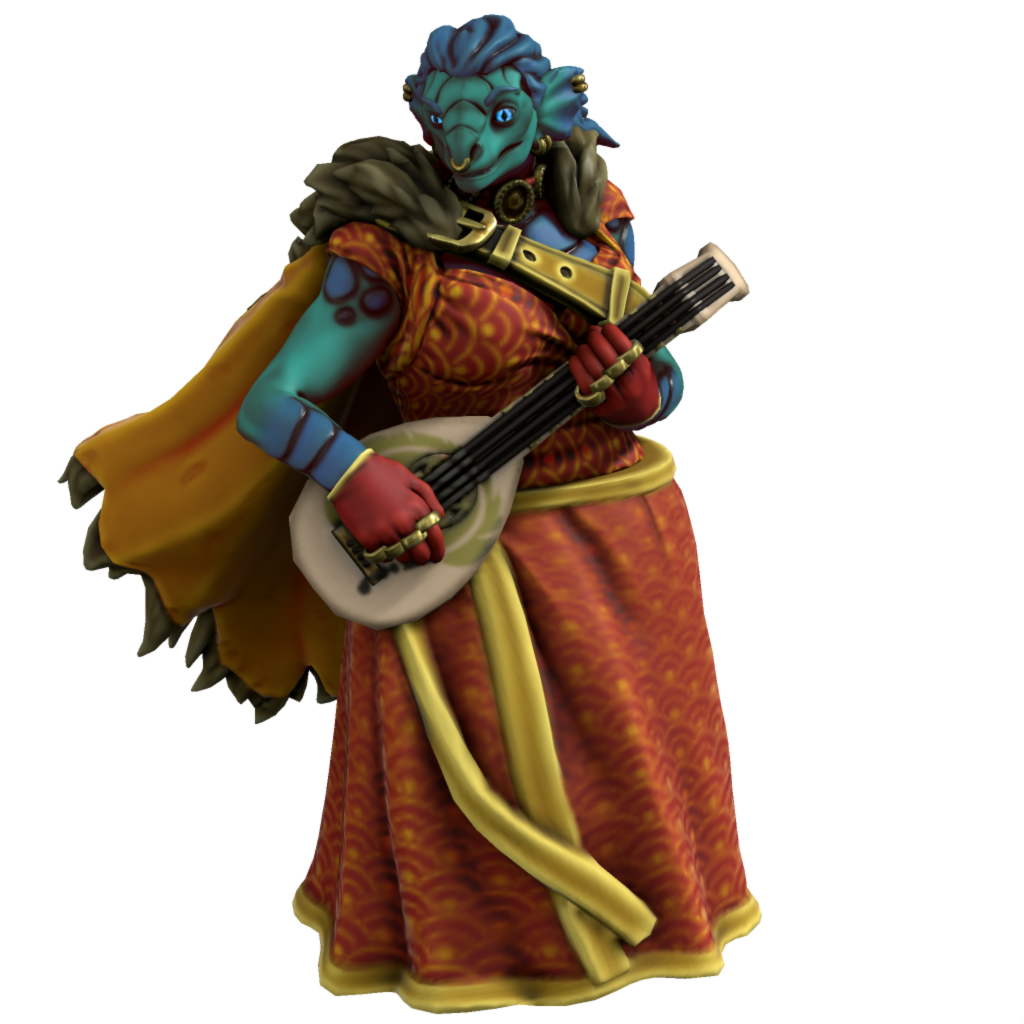
Driarderoc Wulvull by Jarhed
Art
Draconian art consists of many different mediums, though its most prominent artform is the bardic practice of music, stemming from the bardic village of Ealla.
Most prominent artists from Draconian Territory were raised in Ealla, as they then had the chance to grow up around art, study art their whole lives, and find the best way to express themselves.
Those that were not, however, at least spent some time in Ealla studying.
There are also many famous sculptures, paintings, architectural wonders, and other art forms made by Draconians, as Ealla is not just for musicians and art can be made by anyone.
Cuisine
Draconian cuisine is said to be some of the greatest in the world, with rich dishes that include famed food items like pasta, pizza, lasagna, gelato, and other such food.
Pizza and pasta are the ones that carry over most, and while pasta is ultimately self explanatory and can be changed in a million ways, pizza has official variations made by the Draconians.
Some variations on Draconian pizza include:
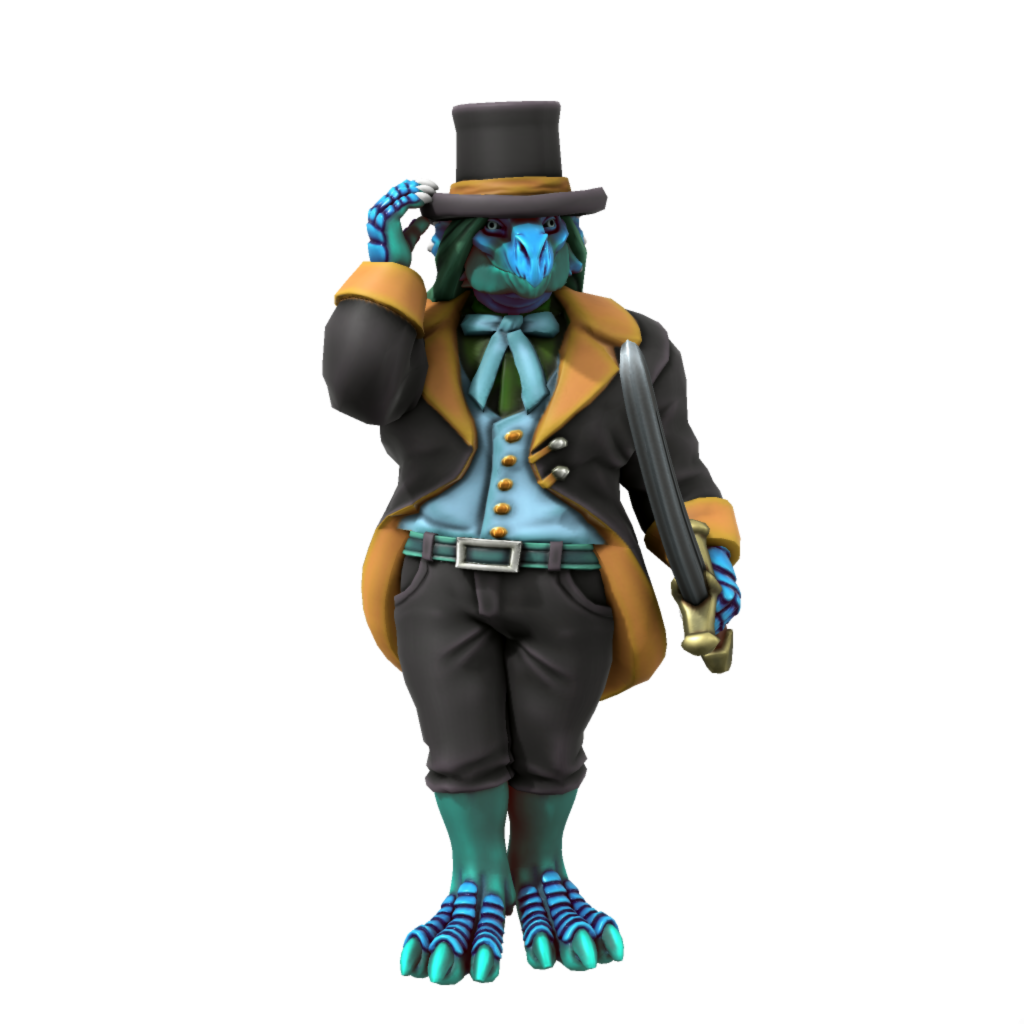
Kicad Bavul by Jarhed
Nobility
Draconian nobility was created by Kilprax Ildial to incentivize the villages to work with him. He promoted the Chiefs of each village at the time to the upper class of his new Draconian society, therefore granting them higher positions for all of history, however it meant they had to listen to him.
Afterwards, Draconians were able to become noble through two methods. The first was by becoming Village Chief. The Chief themselves would not be noble, but their children and all descendants would take up noble titles and be ushered into nobility, while the parent stays as only Chief (unless they were already noble).
The other way is through immense wealth. There are few who have been able to make it to noble status through wealth alone, though the most famous example is Jargar Eltan, a common born man who made his way to being the Noble Head of the Noble Council and changing Draconian society for the better, as he had grown up outside of the noble system and could see its flaws.
Draconian nobles are granted some land in Upper Zephys, where usually they will have a mansion built for themselves and their families to reside in.
Some villages give land in that settlement itself to their nobles as well, though not all follow that practice. For example, Ilder and Dembar have more respect for nature and therefore do not seek to expand for residents that already live within its boundaries.
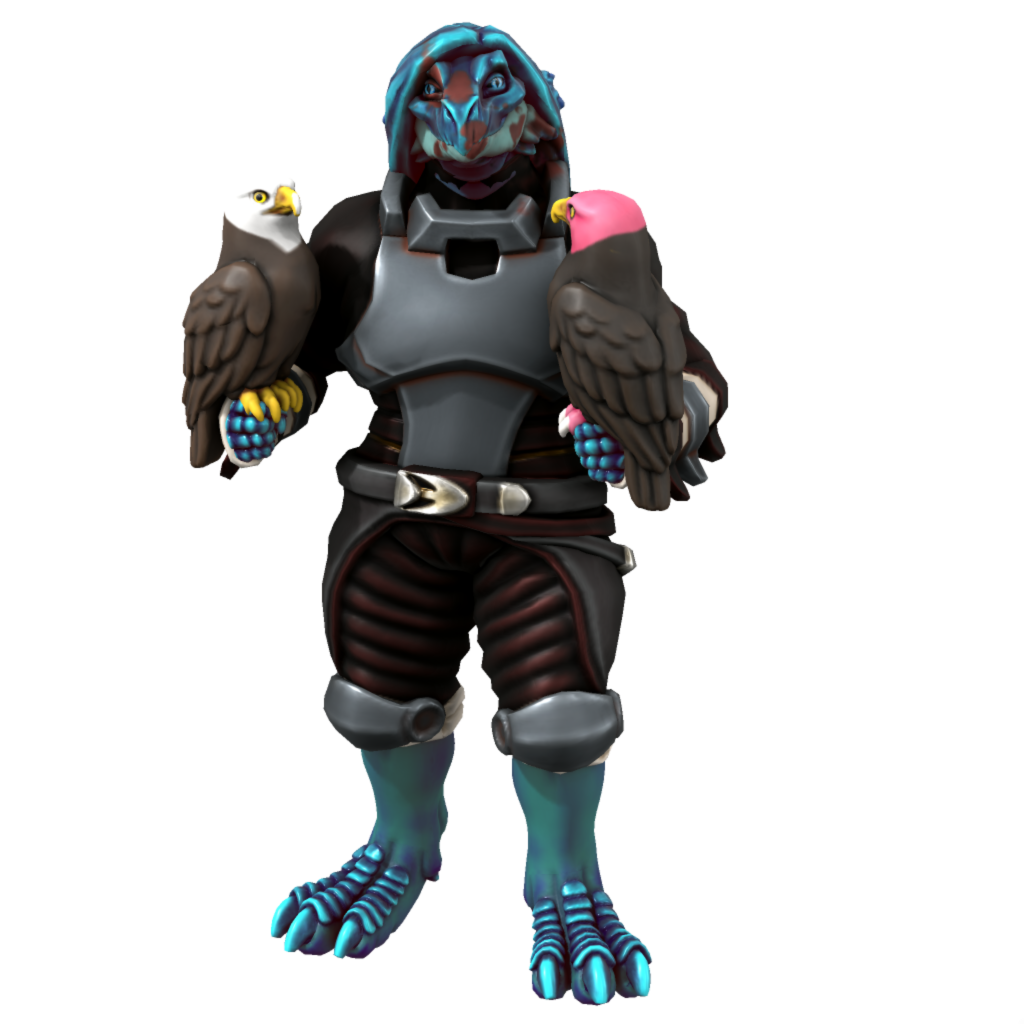
Yilkin Tilrak by Jarhed
Courtship
Draconian courtship is often rather fast, yet so too is it slower than in other cultures like that of Korvians or
Orcs.
Dating for a Draconian is a longer process, where the two will take four years out of their lives to get to know each other in and out.
As Draconian society values knowledge, knowing everything about one's partner is
foundational towards any relationship. Draconians that can't answer any question about their partners are often considered to be bad matches or terrible partners, which is why most Draconians take the four years alone with their partners.
During their four years, they often go on many dates. These dates can include many things, be it travelling, going out to dinner, or just staying at home together.
Before these four years begin, a Draconian begins courtship by approaching their desired partner with their favorite books. If the desired partner, called a Tuora Ir (Desired One), reciprocates the feeling, they will trade their favorite books back.
The four years of courtship then begin with reading each other's favorite books. The one that finishes the other's favorites first is often rewarded with choice of the first date, and then the second date will happen once the second person finishes the books. Then, they will quiz each other on the books, and if they fail the quiz, the relationship often ends there and then.
The large chunk of one's life taken getting to know one's partner is why, often, prolific mages such as the more powerful Grand Wizards remained unmarried. Marriage is a valued tradition in Draconian society, where one shares everything with their partner.
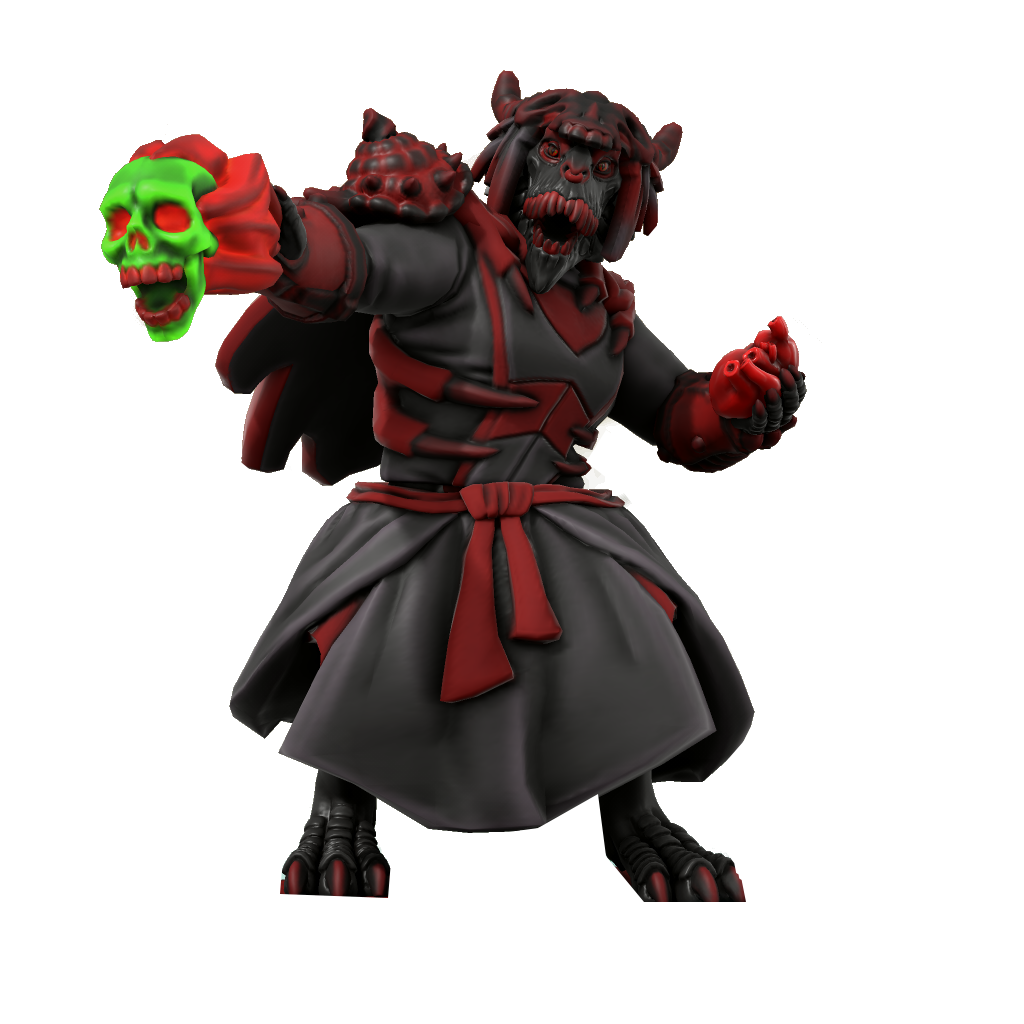
Nawunax Valdacmith by Jarhed
There is no standard type of marriage, so both same-sex and opposite-sex marriage are common among Draconians. Even polyamory is accepted, though not as common, there have been prominent figures who participated in that tradition.
Despite this value on marriage, unmarried Draconians are not looked down upon, unless they not only do not marry, but also do not achieve great power with their magic.
When a Draconian marries, they often settle down in a village they agree upon with their partner. This could include Zephys, and often is the home village of one of the two partners.
After this, Draconians share everything with their partners. When they get home at the end of the day, or whenever they end up getting home (Draconians could stay at work for weeks, after all), they normally take the time to explain everything important that happened, or that they learned.
Language
There are three languages that are officially spoken by Draconians, and three that are also rather common. Draconic,
Ancient Draconic, and the Common Tongue are the official languages.
As for languages that are common, there is Elvish, Dwarvish, and Gnomish in honor of their neighbors. There are also a fair few Draconians who know Shafaian or Kamejin to communicate.
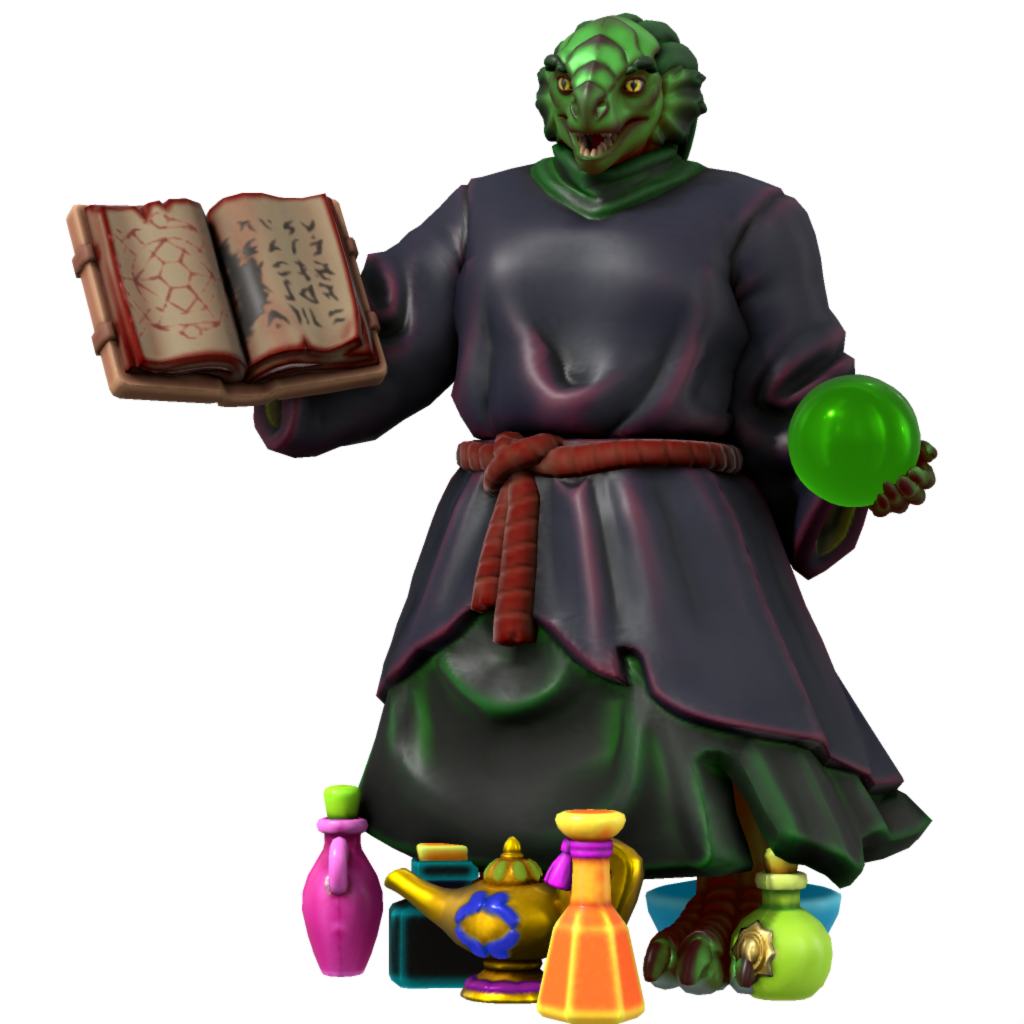
Orlayas Ojeux by Jarhed
Education
The Draconians are highly educated, moreso than most other societies in the world. Some incorrectly believe that Draconians are somehow biologically smarter. This is not true, being something that Draconians themselves (particularly Tamdians) like to say to assert some form of false superiority over others.
The truth is simply that most Draconians are educated from the moment of birth and never stop learning.
Parents teach their children anything they think is important, often then handing them off to teachers or mentors in the village at a certain point in the childs life.
There was a period of time where the villages did not have official institutions for their particular techniques, and there was then a time where they did but they were underfunded. When the Magic College was shut down for ten years from 550-560, however, all villages revamped these programs, and ever since they have become central to Draconian education.
Then, of course, there is the Magic College. Not all Draconians are able to study here, as they only accept mages that they believe have potential and promise.
Those that do attend, however, are said to be the best and brightest the Draconians have.
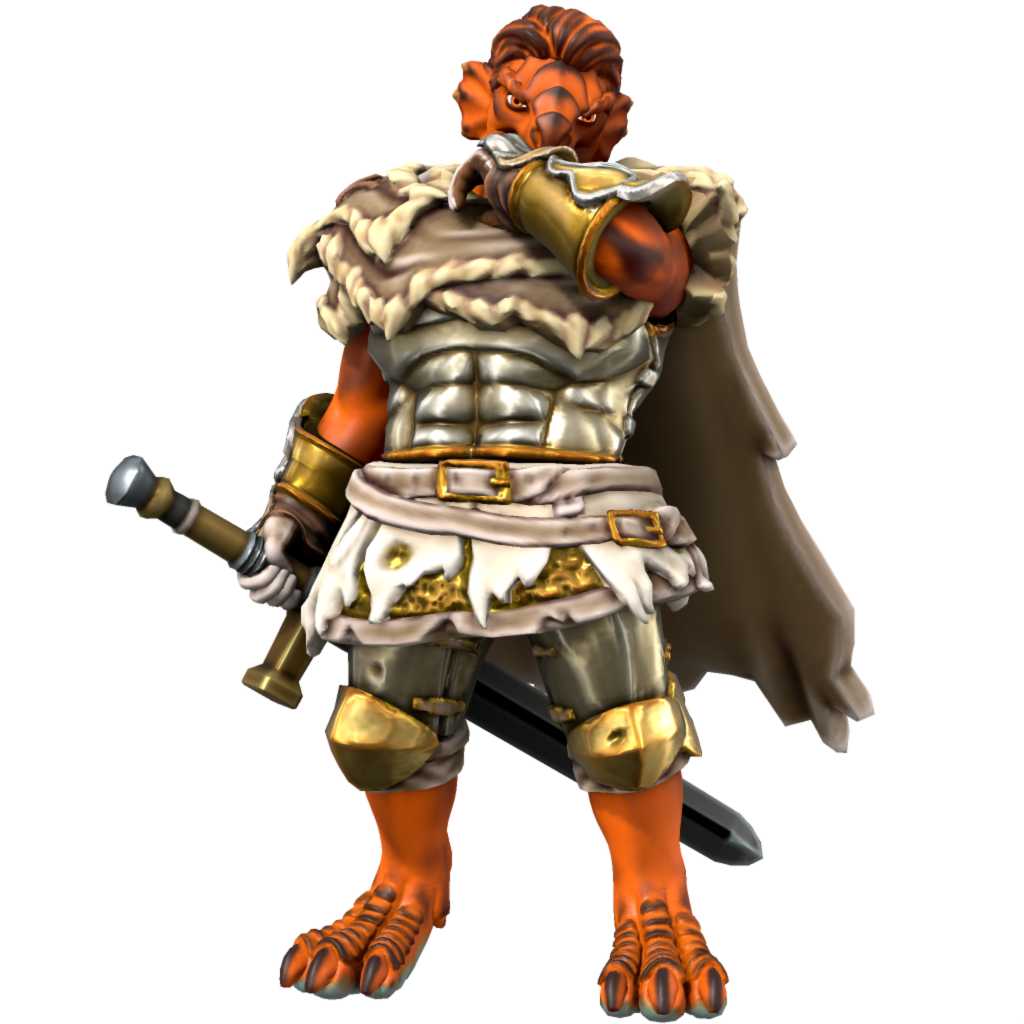
Drixodal Vortrin by Jarhed
Ecko
The 12th month of the year, the Month of Reckoning, is a sacred time for the Draconians.
During it, Draconians look back at the year that has passed, after reflections taken during the 9th month, and determine if they have wasted it or not.
A common practice is to confront someone they have been meaning to talk to, spilling their heart, challenging them to a duel, or whatsoever they determine is right.
This has not always worked out for the best. The 520 Massacre, one of the greatest tragedies in Draconian history, happened because the Magic College Class of 521 decided to practice this and confront 62nd Grand Wizard Drixodal Vortrin, and he did not take it well. All but one of the students died that day, and at the end of it, Drixodal took his own life out of shame.
That being said, tragedies do not always happen.
What usually happens is that Draconians gather close friends and family and all of them let out something they've been meaning to say so that they can move into the new year unburdened.
Biology
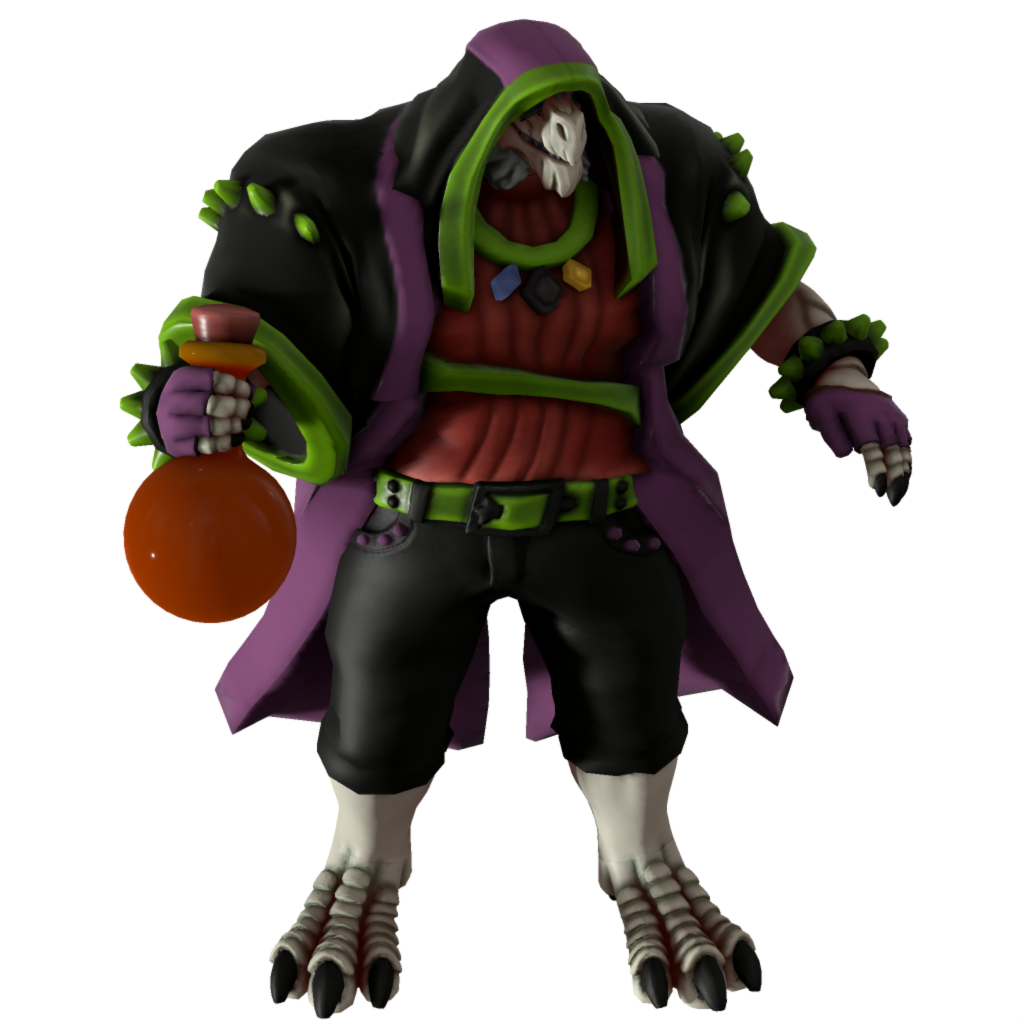
Rhoziros Nimphonker by Jarhed
Height
Draconians are an incredibly large species, with their shortest adults being around 7-8 feet tall (with some outliers at 6 feet).
While Draconians around the 8 foot range are the most average height, there are some that can be much taller, with the tallest natural height for Draconians being up to fifteen feet tall.
Scales
Draconians do not have skin, instead their bodies are coated in scales, which are harder and more durable than the skin of most species (aside from those like Orcs, Emetians, and Giants).
These scales come in many colors, as Helle initially made one for each color.
- Red
- Blue
- Green
- Orange
- White
- Black
- Yellow
- Brown
- Purple
Phrixus spited her by making the Verthica, who had more metallic skin, and all of his demigod children followed this path by having metallic skin as well, such as Salasar Feaphed or Hameila Neconkus.
Some parts of the scales may be different colors, and there are even cases where the scales may end up being a mix of two colors if the parents carry different scale colors.
Hardel Mardaar, for instance, had green scales with black accents because his mother had green scales and his father had black scales.
Breath
Draconians have a strong connection to the source of all magic, and therefore even those who have not yet unlocked their magic, or those unable to access magic, have innate magical capabilities through their Draconic breath.
They are able to breathe out elements, be it fire, water, ice, lightning, poison, acid, or something else. This often depends on their scale color, but it does not always.
Wings
Despite most Dragons having wings, it is not common for Draconians to have them. Most Draconians unlock flight through magic if at all, though flight is not something many can achieve.
Some Draconians are born with wings, while there are cases where others have been cursed or given wings by some magical force.
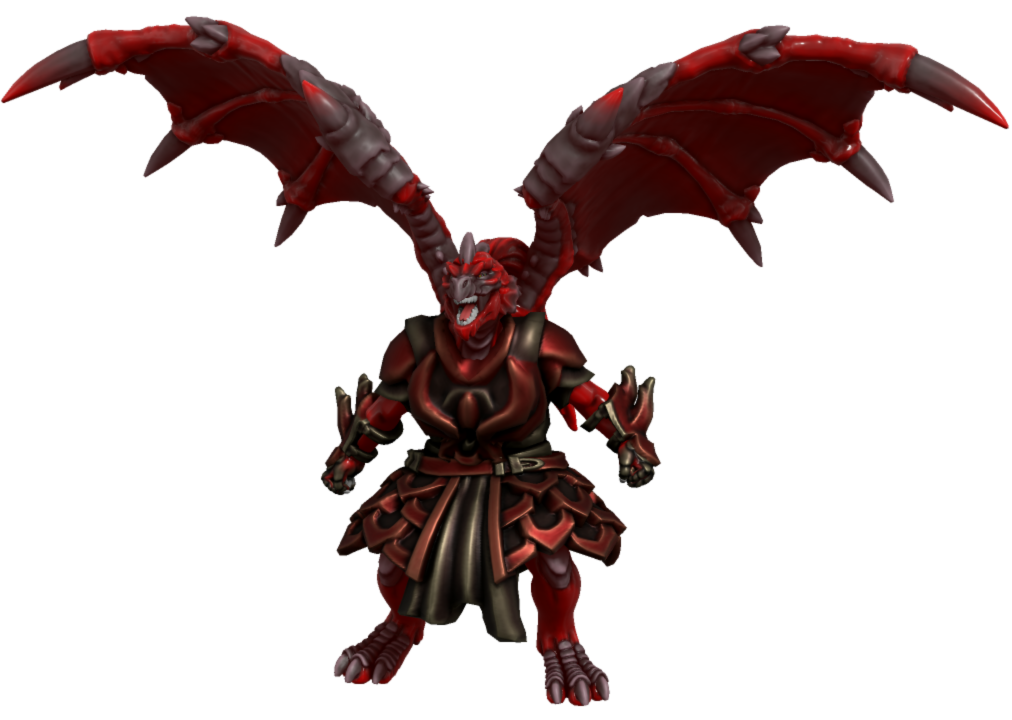
Naxiris Daxur by Jarhed

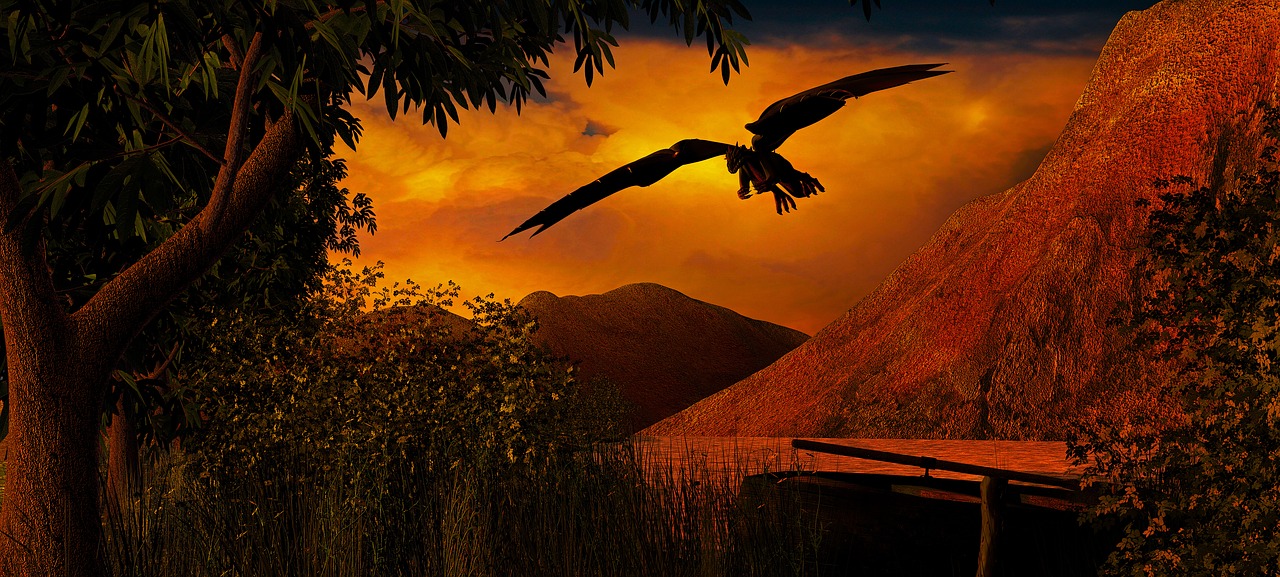
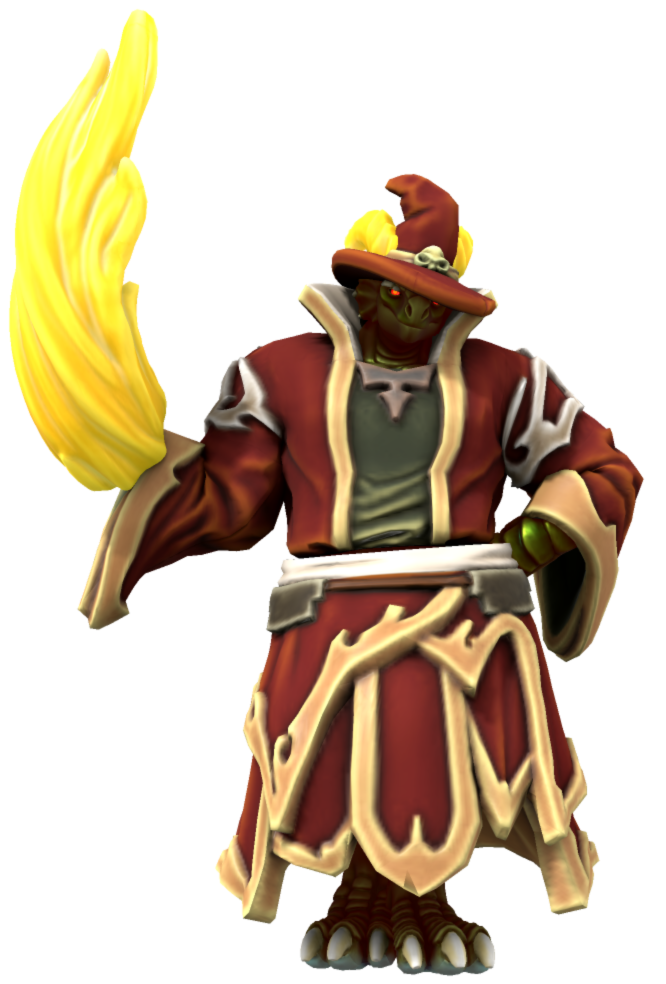
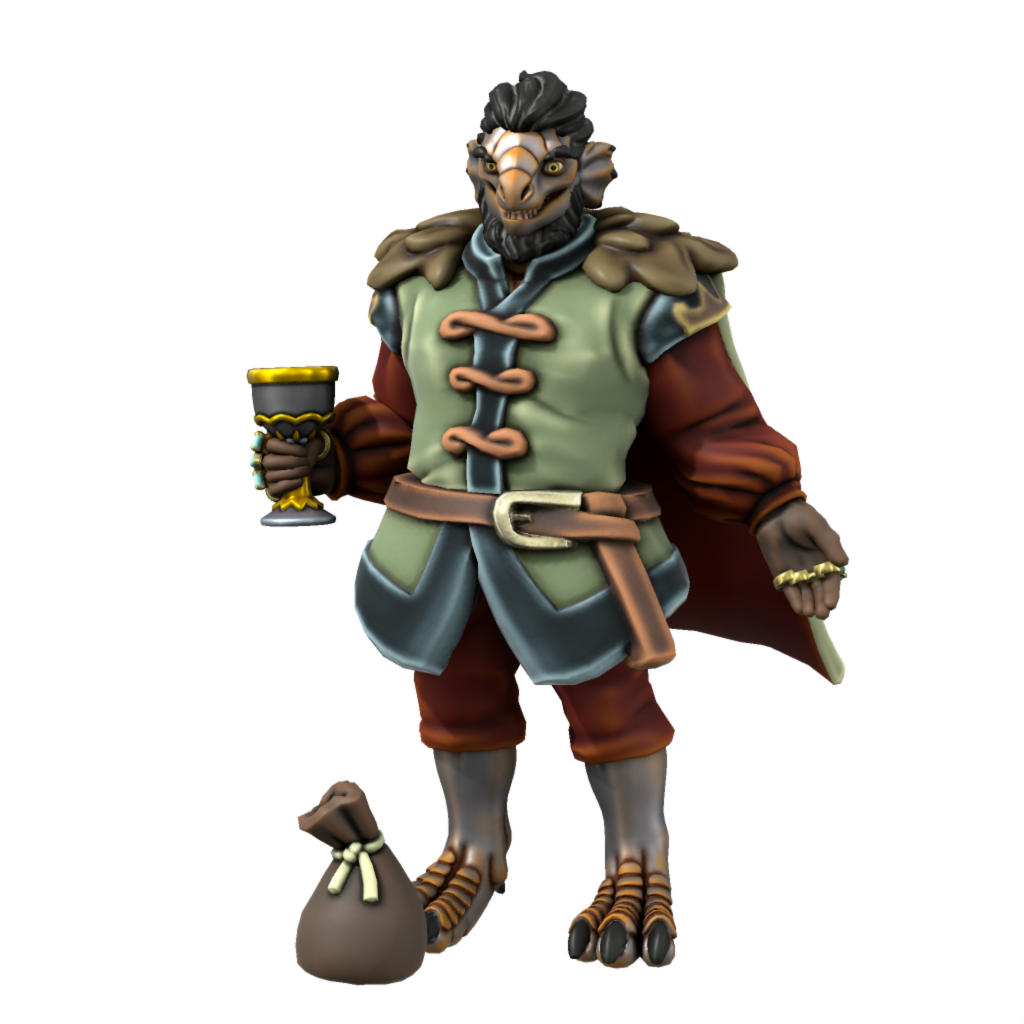
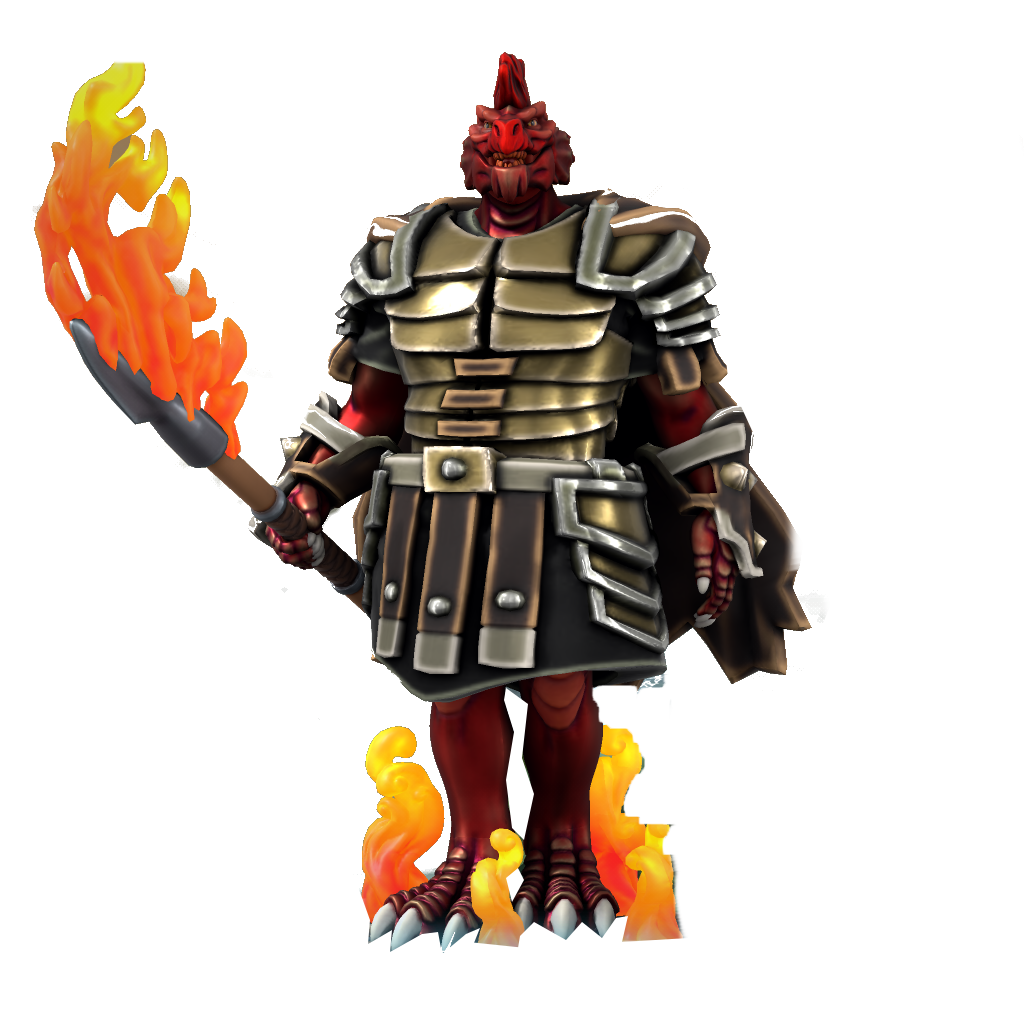

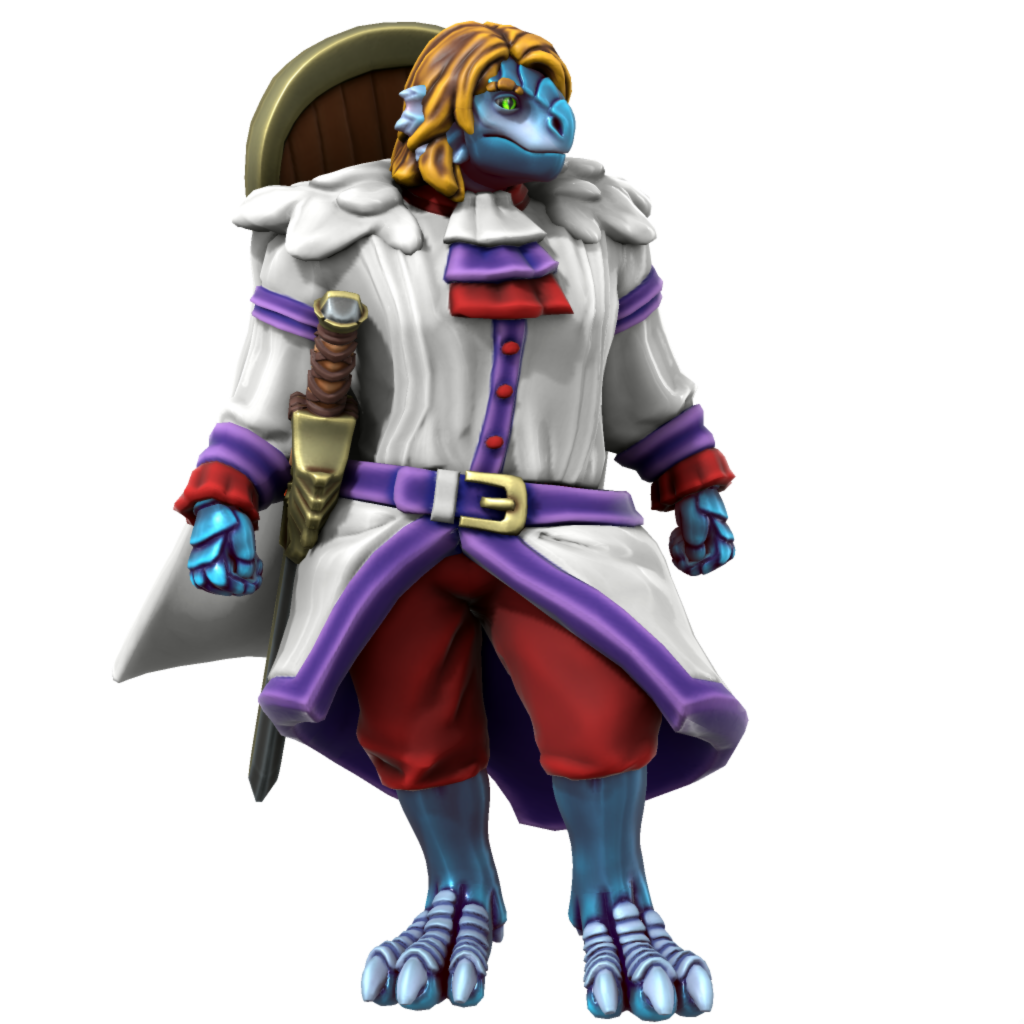



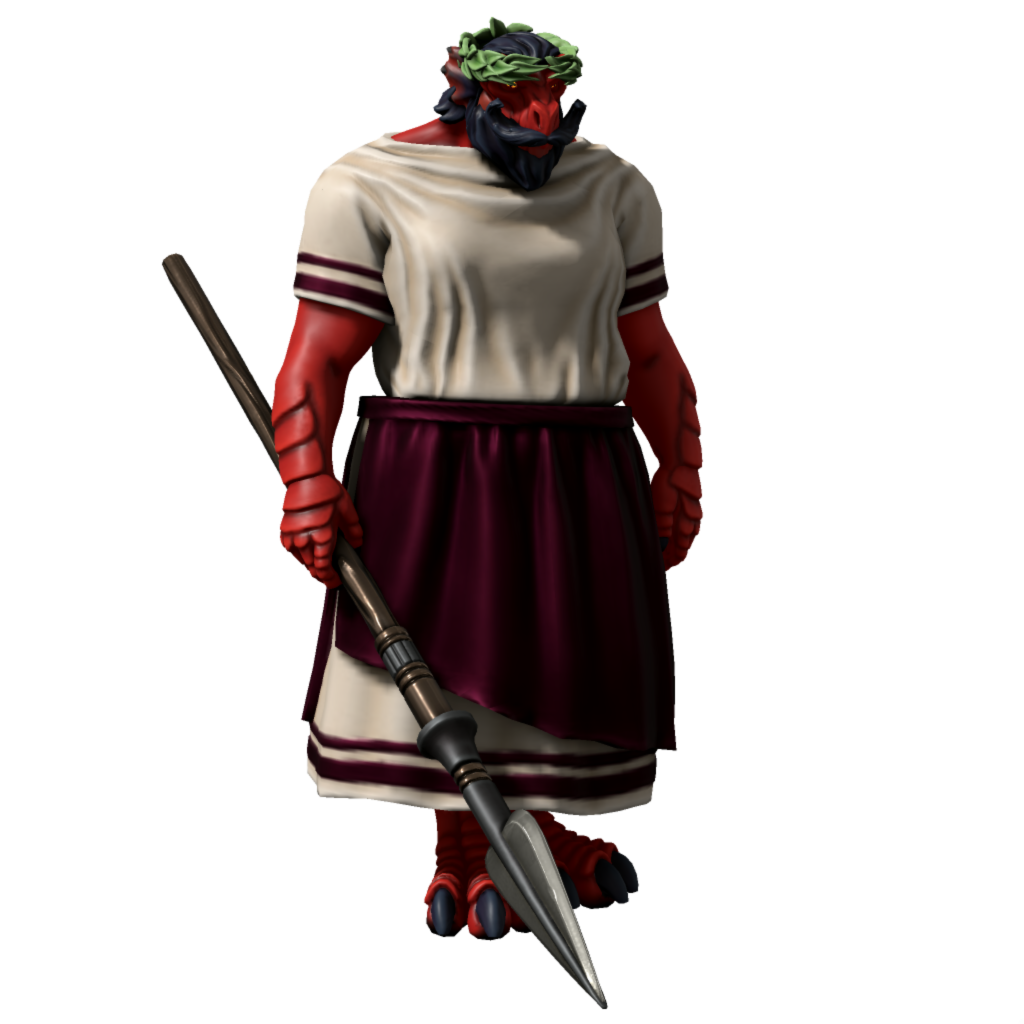




























Comments